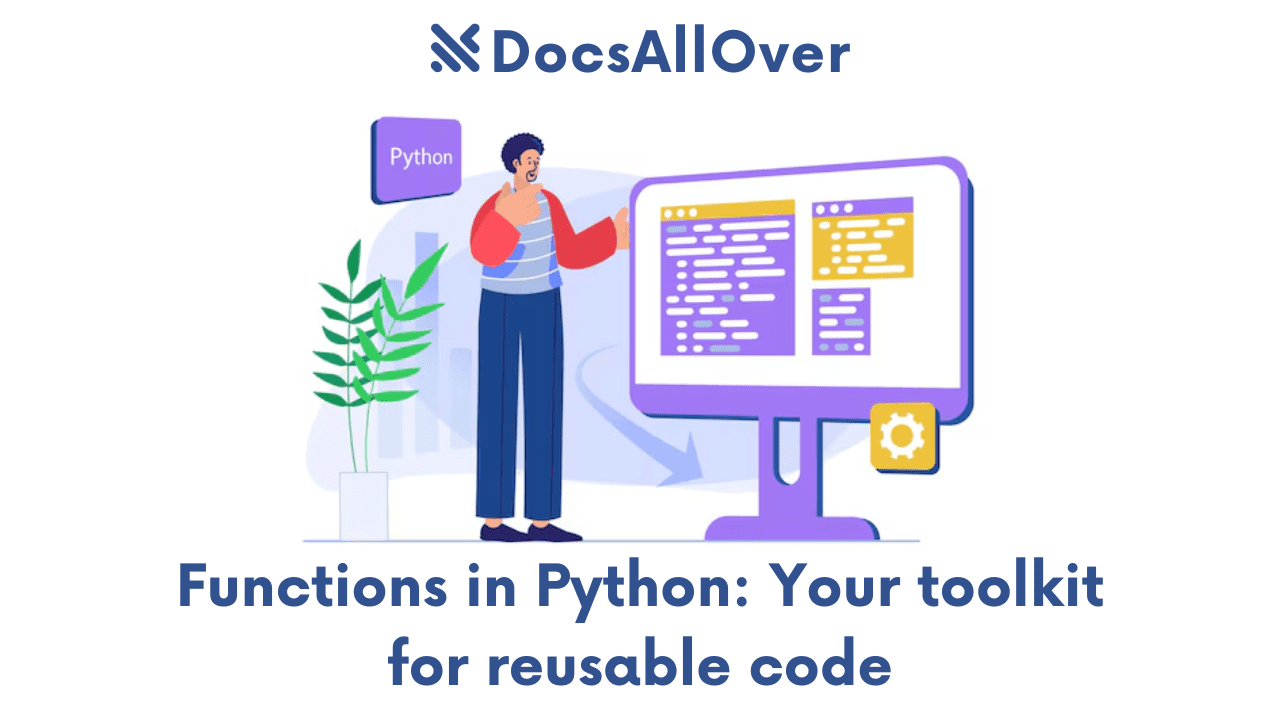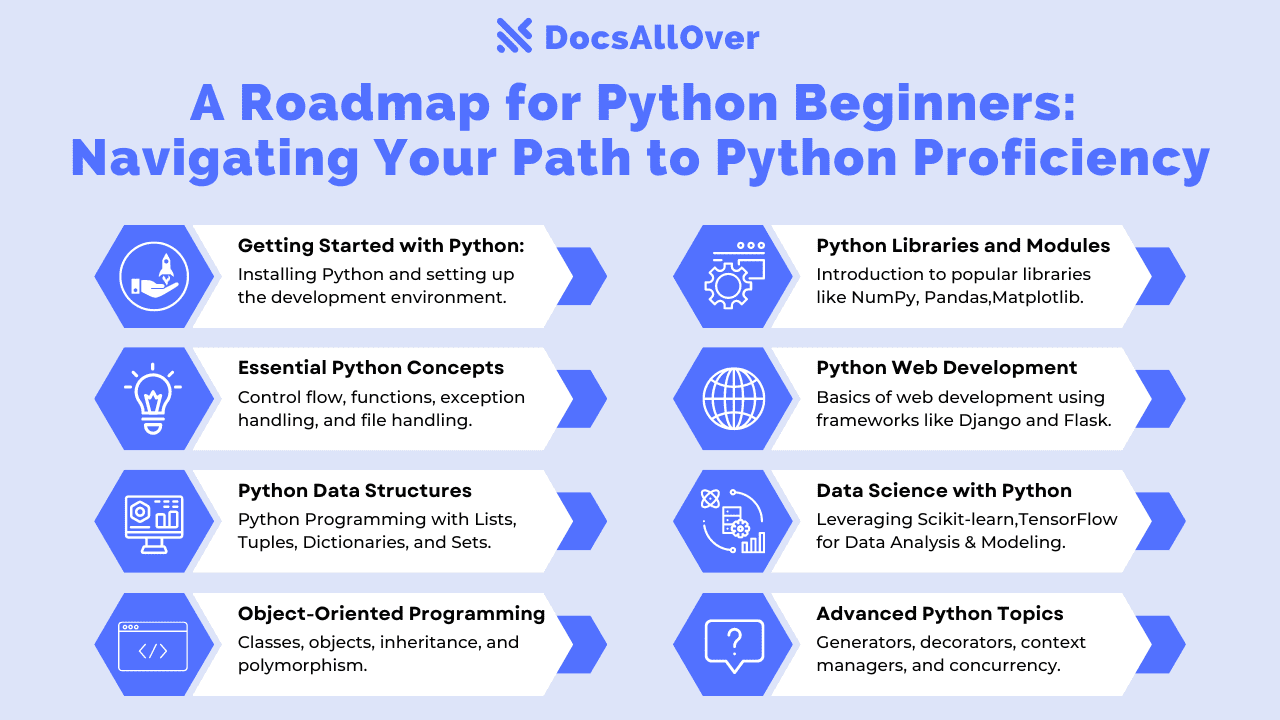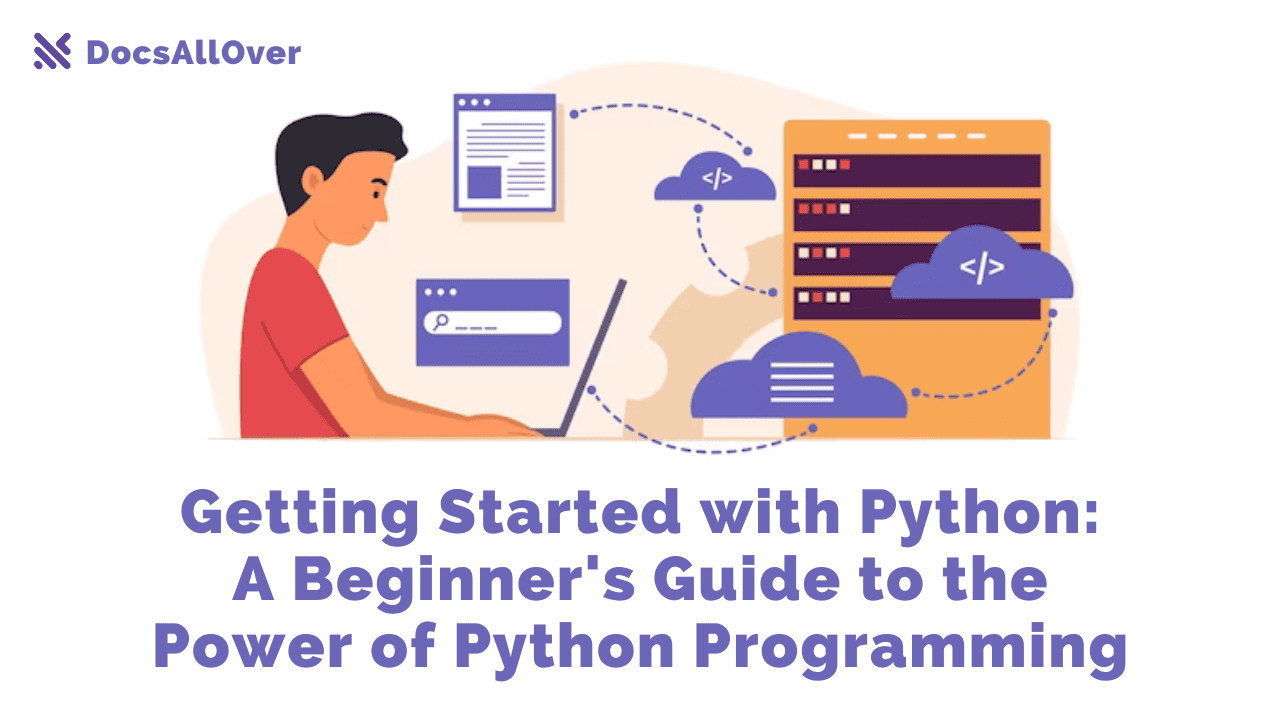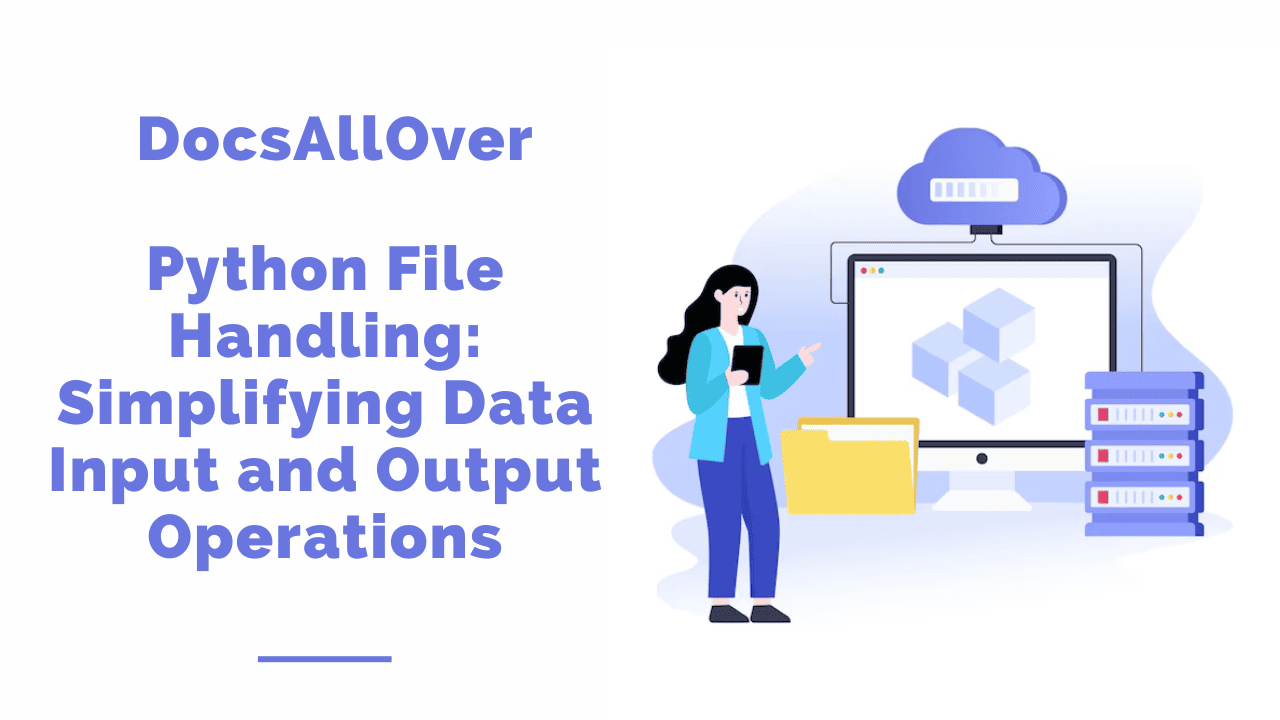Python: A Versatile and Powerful Language for Modern Development
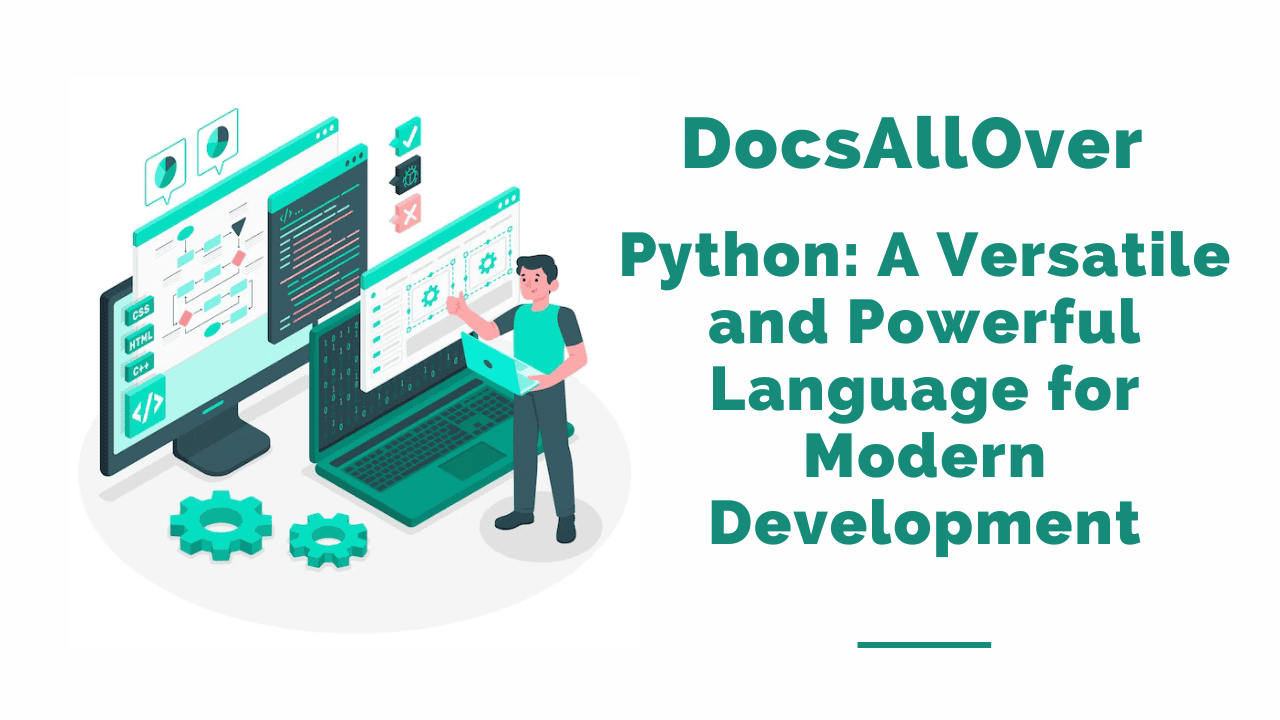
Python is a high-level, interpreted programming language known for its simplicity and readability. It offers a wide range of features and capabilities that make it a popular choice for various domains, including web development, data analysis, machine learning, and automation. In this blog, we will explore the key features of Python and showcase some programming examples to illustrate its power and versatility.
Why is Python a well-rounded and potent programming language for contemporary development?
Python boasts a clean and intuitive syntax, which makes it easy to learn and understand, even for beginners. Its readability is enhanced by the use of meaningful indentation, eliminating the need for braces or semicolons. This simplicity allows developers to express their ideas more effectively, resulting in clean and concise code.
One of the strengths of Python lies in its extensive collection of libraries and frameworks. These tools provide pre-built functions and modules that can be leveraged to accelerate development and simplify complex tasks. For example, the NumPy library is widely used for numerical computing and scientific calculations, while the Django framework simplifies the process of building robust web applications.
Python has gained immense popularity in recent years as a versatile programming language for a wide range of applications. Known for its simplicity, readability, and extensive library ecosystem, Python has become a go-to choice for developers across various domains.
One of the key advantages of Python is its ease of use and readability. Its syntax is designed to be straightforward and intuitive, making it beginner-friendly and accessible to developers of all skill levels. With its indentation-based code structure, Python encourages clean and well-organized code, enhancing readability and reducing the likelihood of errors.
Python's extensive library ecosystem is another reason for its popularity. The Python Package Index (PyPI) hosts thousands of open-source libraries, providing developers with pre-built functions and modules that can be easily integrated into their projects. These libraries cover a wide range of domains, including web development, scientific computing, machine learning, data analysis, and more. For example, popular libraries like Pandas, NumPy, and Matplotlib empower developers to efficiently handle data, perform complex calculations, and create visualizations.
Advantages of Python:
1. Readability:
Python's syntax is designed to be easily readable and understandable, making it beginner-friendly and accessible to developers of all levels.
2. Easy to Learn:
Python has a gentle learning curve, allowing developers to grasp the fundamentals quickly and start coding effectively in a short period of time.
3. Large and Active Community:
Python has a vast and active community of developers, which means there is ample support, resources, and documentation available for any questions or issues you may encounter.
4. Extensive Standard Library:
Python comes with a comprehensive standard library that offers a wide range of modules and functions for various tasks, saving developers time and effort in building functionalities from scratch.
5. Cross-platform Compatibility:
Python is available on multiple platforms, including Windows, macOS, and Linux, allowing developers to write code that can run seamlessly across different operating systems.
6. Third-Party Libraries:
Python has a rich ecosystem of third-party libraries and frameworks that cover almost every imaginable domain, enabling developers to leverage pre-existing solutions and accelerate development.
7. Scalability:
Python supports both small-scale and large-scale projects, making it suitable for startups as well as enterprise-level applications.
8. Versatility:
Python can be used for various purposes, including web development, data analysis, machine learning, artificial intelligence, scientific computing, automation, and more.
9. Rapid Prototyping:
Python's simplicity and expressiveness make it an ideal language for rapid prototyping, allowing developers to quickly build and test ideas before committing to a full-scale implementation.
10. Integration Capabilities:
Python can easily integrate with other languages such as C, C++, Java, and .NET, making it a flexible choice for projects that require interoperability with existing systems or libraries.
11. Object-Oriented Programming (OOP) Support:
Python supports OOP principles, allowing developers to organize their code into reusable objects, making it easier to maintain and extend their applications.
12. Productivity:
Python's clean syntax and extensive library support enable developers to write code more efficiently and accomplish tasks with fewer lines of code, leading to increased productivity.
13. Community-driven Development:
Python follows a community-driven development model, where developers actively contribute to the language's evolution, resulting in regular updates and improvements.
14. Prototyping Data Analysis:
Python, along with libraries like Pandas and NumPy, is widely used for data analysis and manipulation, making it a preferred choice for scientists, researchers, and data analysts.
15. Machine Learning and AI:
Python has gained popularity in the field of machine learning and artificial intelligence due to libraries like TensorFlow, PyTorch, and Scikit-learn, which provide powerful tools for building and training models.
16. Web Development:
Python frameworks like Django and Flask simplify web development, providing robust features for building scalable and secure web applications.
17. Scripting:
Python's scripting capabilities make it ideal for automating repetitive tasks, system administration, and writing scripts for various purposes.
18. Testing and Debugging:
Python's built-in testing frameworks, such as unittest and pytest, facilitate the creation of test suites to ensure code quality, while its debugging tools help in identifying and fixing issues efficiently.
19. Code Readability and Maintainability:
Python's emphasis on code readability and consistency makes it easier for developers to understand and maintain codebases, especially in collaborative projects.
20. Community Support and Resources:
The Python community actively shares knowledge, resources, and best practices through forums, online tutorials, conferences, and open-source projects, fostering continuous learning and growth.
21. Documentation:
Python has extensive and well-documented official documentation, providing comprehensive guidance on language features, libraries, and modules.
22. Prototyping Internet of Things (IoT) Devices:
Python's simplicity and flexibility make it a popular choice for prototyping IoT devices, allowing developers to quickly build and test device functionality.
23. Educational Purposes:
Python's beginner-friendly nature and versatility make it an excellent choice for educational institutions to teach programming concepts and introduce students to the world of coding.
24. Community-driven Tools and Frameworks:
Python's community-driven nature has led to the development of a wide range of tools, frameworks, and libraries that cater to specific needs, ensuring developers have a plethora of options to choose from.
25. Stability and Maturity:
Python has been around for over three decades and has evolved into a stable and mature language, making it a reliable choice for long-term projects.
26. Prototyping User Interfaces:
Python, along with libraries like Tkinter and PyQt, allows developers to create graphical user interfaces (GUIs) quickly, enabling rapid prototyping of desktop applications.
27. Open-source Philosophy:
Python embraces the open-source philosophy, encouraging collaboration, sharing, and transparency within the developer community.
28. Community Events and Conferences:
Python hosts numerous community events, conferences, and meetups worldwide, providing opportunities for networking, learning, and staying updated with the latest trends in the Python ecosystem.
29. Job Opportunities:
Python's popularity has created a high demand for Python developers, offering a plethora of job opportunities in various industries and domains.
30. Continuous Development:
Python is continuously evolving, with new features and improvements being added regularly. The language's adaptability ensures it stays relevant and up-to-date with changing technology trends.
Disadvantages of Python:
1. Speed:
Python is an interpreted language, which means it can be slower compared to compiled languages like C or Java. This can be a concern for applications that require high-performance execution or heavy computational tasks.
2. Global Interpreter Lock (GIL):
Python's Global Interpreter Lock allows only one thread to execute Python bytecode at a time, limiting the ability to fully utilize multi-core processors for parallel execution. This can impact the performance of multi-threaded applications.
3. Mobile and Game Development:
Python may not be the ideal choice for mobile app development or building resource-intensive games. Other languages like Java or Swift are more commonly used for these purposes.
4. Memory Consumption:
Python's memory consumption can be relatively high compared to other languages, which can be a concern for memory-constrained environments or large-scale applications.
5. Database Access:
While Python provides database access through libraries like SQLAlchemy and Django ORM, it may not offer the same level of performance and fine-grained control as lower-level languages specifically designed for database operations.
6. Compatibility and Versioning:
Python has experienced several major version releases, and compatibility between different versions can sometimes be an issue. Some libraries or frameworks may not be fully compatible with the latest Python versions, requiring adjustments or migration efforts.
7. Mobile and Web Browser Support:
Python is primarily used on server-side development, and its support for mobile platforms or web browsers is more limited compared to JavaScript or native mobile development languages.
8. Limited Mobile Development Frameworks:
While there are frameworks like Kivy and BeeWare for mobile app development with Python, the ecosystem is not as mature or extensive as those available for languages like Swift or Kotlin.
9. App Size:
Python applications tend to have a larger file size compared to applications written in lower-level languages. This can impact the download and installation time for end-users.
10. Threading Limitations:
Python's Global Interpreter Lock (GIL) can limit the effectiveness of threading for parallel execution. Although multiprocessing can be used to overcome this limitation, it introduces additional complexity.
11. Deployment and Packaging:
Packaging and distributing Python applications can sometimes be challenging, especially when dealing with dependencies and ensuring compatibility across different platforms.
12. Learning Curve for Performance Optimization:
While Python provides high-level abstractions and productivity, optimizing code for performance may require knowledge of lower-level languages and techniques.
It's important to note that these disadvantages should be considered in the context of your specific use case and requirements. Python's strengths often outweigh its limitations, and many of these drawbacks can be mitigated with careful planning, optimization techniques, or by leveraging the vast ecosystem of Python libraries and tools.
Applications of Python
Web development with Python
Python is a popular programming language for web development. It is easy to learn and use, and it has a large and active community. Python is also very versatile, and it can be used to build a wide variety of web applications, from simple websites to complex web applications.
Benefits of using Python for web development
There are many benefits to using Python for web development, including:
- Easy to learn and use: Python is a relatively easy programming language to learn, even for beginners. It has a simple syntax and is very readable.
- Versatile: Python can be used to build a wide variety of web applications, from simple websites to complex web applications.
- Large and active community: Python has a large and active community of developers. This means that there are many resources available to help you learn Python and to solve problems that you may encounter.
- Scalable: Python applications can be scaled to handle large amounts of traffic.
- Secure: Python applications can be made very secure.
Popular Python web frameworks
- Django: Django is a full-stack Python web framework. It is known for its speed, scalability, and security.
- Flask: Flask is a micro-framework for Python. It is lightweight and easy to use.
- Pyramid: Pyramid is a lightweight Python web framework that is highly customizable.
- TurboGears: TurboGears is a full-stack Python web framework that is known for its flexibility and scalability.
Scientific Computing with Python
Python is a high-level programming language that is widely used in the scientific community for scientific computing. It is a general-purpose language that is easy to learn and use, and it has a large number of scientific libraries that make it ideal for a wide range of scientific tasks.
Why Python for Scientific Computing?
There are several reasons why Python is a good choice for scientific computing:
- It is easy to learn and use, even for beginners.
- It has a large number of scientific libraries that make it easy to perform a wide range of scientific tasks.
- It is open source and free to use.
- It is portable and can be used on a variety of platforms, including Windows, Linux, and macOS.
Popular scientific libraries for Python
- NumPy: A library for scientific computing with Python.
- SciPy: A library for scientific computing with Python, including functions for statistics, optimization, and signal processing.
- Matplotlib: A library for data visualization with Python.
- Pandas: A library for data analysis and manipulation with Python.
Applications of Scientific Computing with Python
Python is used in a wide variety of scientific applications, including:
- Physics: Python is used for physics simulations, data analysis, and visualization.
- Chemistry: Python is used for chemistry simulations, data analysis, and visualization.
- Biology: Python is used for bioinformatics, data analysis, and visualization.
- Data science: Python is used for data cleaning, data analysis, and machine learning.
- Engineering: Python is used for engineering simulations, data analysis, and visualization.
Getting Started with Scientific Computing in Python
To get started with scientific computing in Python, you will need to install Python and the necessary scientific libraries. You can install Python from the official Python website. Once you have installed Python, you can install the necessary scientific libraries using a package manager such as pip.
Once you have installed Python and the necessary scientific libraries, you can start writing Python code for scientific computing. There are many resources available online and in books to help you learn how to write Python code for scientific computing.
Machine learning with Python
Machine learning is a type of artificial intelligence (AI) that allows computers to learn without being explicitly programmed. In other words, machine learning algorithms can learn from data and improve their performance over time without being explicitly told what to do.
Benefits of using Python for machine learning
- Easy to learn: Python is a relatively easy language to learn, even for beginners with no prior programming experience.
- Powerful libraries: Python has a wide range of libraries and tools for machine learning, such as NumPy, SciPy, and scikit-learn. These libraries make it easy to perform common machine learning tasks, such as data preprocessing, feature engineering, and model building.
- Large community: Python has a large and active community of developers and users. This means that there are many resources available to help you learn Python and machine learning, and you can easily get help if you get stuck.
Machine learning algorithms
Applications of machine learning with Python
Machine learning is used in a wide variety of applications, including:
- Web development: Machine learning can be used to improve the performance of web applications, such as by recommending products to customers or detecting fraud.
- Scientific computing: Machine learning can be used to analyze scientific data and make predictions.
- Business intelligence: Machine learning can be used to analyze business data and identify trends and patterns.
- Medical diagnosis: Machine learning can be used to develop systems that can diagnose diseases and recommend treatments.
- Natural language processing: Machine learning can be used to develop systems that can understand and process human language.
Machine learning is a powerful tool that can be used to solve a wide variety of problems. Python is a popular programming language for machine learning because it is easy to learn and use, and it has a wide range of libraries and tools for machine learning.
If you are interested in learning machine learning, Python is a great place to start. There are many resources available online and in libraries to help you learn Python and machine learning.
Artificial Intelligence
Python is a popular language for artificial intelligence (AI) development. It is easy to learn and use, and it has a wide range of libraries and tools that are specifically designed for AI development.
Python is used in a variety of AI applications
- Machine learning: Python is used to develop and train machine learning models. There are many popular machine learning libraries available for Python, such as TensorFlow, PyTorch, and scikit-learn.
- Natural language processing (NLP): Python is used to develop NLP applications, such as chatbots, machine translation, and text summarization. There are many popular NLP libraries available for Python, such as NLTK and spaCy.
- Computer vision: Python is used to develop computer vision applications, such as image recognition and object detection. There are many popular computer vision libraries available for Python, such as OpenCV and PyTorch.
Data Science
Python is also a popular language for data science. It is easy to use for data manipulation and analysis, and it has a wide range of libraries and tools that are specifically designed for data science.
Variety of data science applications
- Data cleaning and preparation: Python is used to clean and prepare data for analysis. There are many popular data cleaning and preparation libraries available for Python, such as Pandas and NumPy.
- Exploratory data analysis (EDA): Python is used to perform EDA on data. There are many popular EDA libraries available for Python, such as Matplotlib and Seaborn.
- Statistical analysis: Python is used to perform statistical analysis on data. There are many popular statistical analysis libraries available for Python, such as SciPy and Statsmodels.
Data Analytics
Python is also a popular language for data analytics. It is easy to use for data visualization and reporting, and it has a wide range of libraries and tools that are specifically designed for data analytics.
Python is used in a variety of data analytics applications, including:
- Data visualization: Python is used to create data visualizations, such as charts and graphs. There are many popular data visualization libraries available for Python, such as Matplotlib and Seaborn.
- Data reporting: Python is used to create data reports. There are many popular data reporting libraries available for Python, such as Pandas and Dash.
Game Development
Python is also a popular language for game development. It is easy to use and has a wide range of libraries and tools that are specifically designed for game development.
Game development applications
- 2D and 3D game development: Python can be used to develop 2D and 3D games. There are many popular game development libraries available for Python, such as Pygame and Panda3D.
- Mobile game development: Python can be used to develop mobile games for iOS and Android devices. There are many popular mobile game development libraries available for Python, such as Kivy and Pyjnius.
Scripting and Automation
Python is also a popular language for scripting and automation. It is easy to use and has a wide range of libraries and tools that are specifically designed for scripting and automation.
Python is used in a variety of scripting and automation applications, including:
Web automation
Python can be used to automate web-based tasks, such as scraping data from websites and filling out forms. There are many popular web automation libraries available for Python, such as Selenium and Scrapy.
System administration
Python can be used to automate system administration tasks, such as managing files and processes. There are many popular system administration libraries available for Python, such as Ansible and Chef.
Let's dive into some programming examples to showcase the capabilities of Python.
1. Hello, World!
The traditional "Hello, World!" program is often the first step when learning a new programming language. In Python, it can be achieved with a single line of code:
2. List Manipulation
Python offers built-in data structures like lists, which can be easily manipulated. Here's an example of adding elements to a list and accessing its values:
3. File Handling
Python provides convenient methods for working with files. Here's an example of reading data from a file and printing its contents:
Python's versatility extends beyond these examples, as it can be used for a wide range of applications, including web development, data analysis, scripting, and more. Its large and active community ensures continuous support and the availability of numerous resources.

